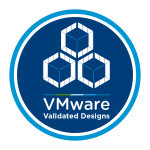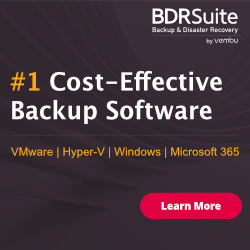
As we have multiple products to construct the Software Defined Data Center (SDDC), then who will lead the project to provide best of his/her knowledge to deliver a complete solution to the client? Do they need to hire three Architects like Server/Storage/Network pillars to launch the design? To solve such problems, VMware wants to create/validate the designs first and then provide that as a solution to the clients in simple terms – VMware Validated Designs. The VMware Validated Designs (VVD) provides prescriptive guidance and tools to plan, build, and operate a Software-Defined Data Center (SDDC). The designs help customers deploy VMware SDDC components to achieve a wide variety of SDDC use cases with predictable results and according to best practices. VVDs are extensively tested to ensure all components and their specific versions are validated to work in unison, to scale to predetermined design objectives, and to operate as our customers expect. The VVD for SDDC is a holistic approach to designing, operating, and upgrading the full SDDC stack.
The VMware Validated Designs (VVDs) are a set of prescriptive documents that explain how to plan, deploy, and operate an SDDC. VVDs are based on a collection of individual VMware products (vSphere, vSAN, NSX, vRealize Suite), that are combined into a common consumable package. The collection of individual products, and their respective version numbers, make up the VMware Validated Design Software Bill of Materials, or BOM for short. The 4.2 release includes several incremental version updates to the software BOM along with detailed steps on how to upgrade each component.
What’s new?
Version 4.2 adds Availability Zones as a first-class option to the Standard Architecture (2-pod), utilizing the power of vSAN Stretched Clusters. Previously the Architecture and Detailed Design components of the Availability Zones feature had been released as an Early Access document to our customers. VVD 4.2 now provides this as an end-to-end solution, with not only the architecture, but also deployment guidance, and analysis on how this feature impacts customers’ day 2 operations. This is the first time that VMware has provided such extensive guidance to using vSAN Stretched Clusters across the entire suite of SDDC products. Several large customers are already using this technology with their VVD deployments, and we can now provide the prescriptive, validated design to everyone. This lays the groundwork for Availability Zones to land in a future Cloud Foundation release.
The 4.2 release provides the following new features:
- Guidance to design and implement a dual-region SDDC that has multiple availability zones. By using a vSAN stretched cluster in the protected region, you can use synchronous replication between availability zones to prevent data loss if one of the zones goes offline.
- Updated software BOM including vSphere 6.5 P02, NSX 6.4, vRealize Log Insight 4.5.1 and vRealize Business 7.3.1. The updated BOM enables customers to implement the latest VMware software releases with fully validated interoperability.
- Deployment ToolKit (DTK) updated for 4.2 is targeted for a same-day release – see the separate release announcement. Previous releases of DTK had lagged the VVD GA, and PSO and Partner feedback made it clear that providing this expeditiously was critical to their operating model.
- Site Recovery Manager and vSphere Replication implementations are moved to a new SDDC layer for Business Continuity. This improves the VVD’s modularity, and makes the deployment more intuitive. Additional metrics from Site Recovery Manager are now surfaced in vRealize Operations Manager and vRealize Log Insight.
- An improved order of deployment to enable monitoring capabilities in the SDDC as early as possible during deployment.
- Upgrade guidance to provide the best path to upgrade from VMware Validated Design 4.1 will be available with the GA release. This was a heavily requested feature by customers who did not want to wait until a subsequent monthly add-on release.
- Improved Backup and Restore guide will be released shortly after GA which will deprecate the VDP-specific sections and be more VADP compliant. Additionally, the Operational Verification guide will see better advice regarding what is being checked, why, what the expected outcomes should be, and troubleshooting tips to help resolve any unexpected results.
Summary
VMware Validated Designs provide a prescriptive path to not only design and deploy a modern SDDC, but how to operate and maintain your SDDC over time. This latest VVD, the VMware Validated Design for Software-Defined Data Center 4.2, extends these capabilities by introducing support for the latest software versions, adding several usability improvements, and now includes steps for implementing Availability Zones and Stretch Cluster support.
“Be social and share it with social media, if you feel worth sharing it”



